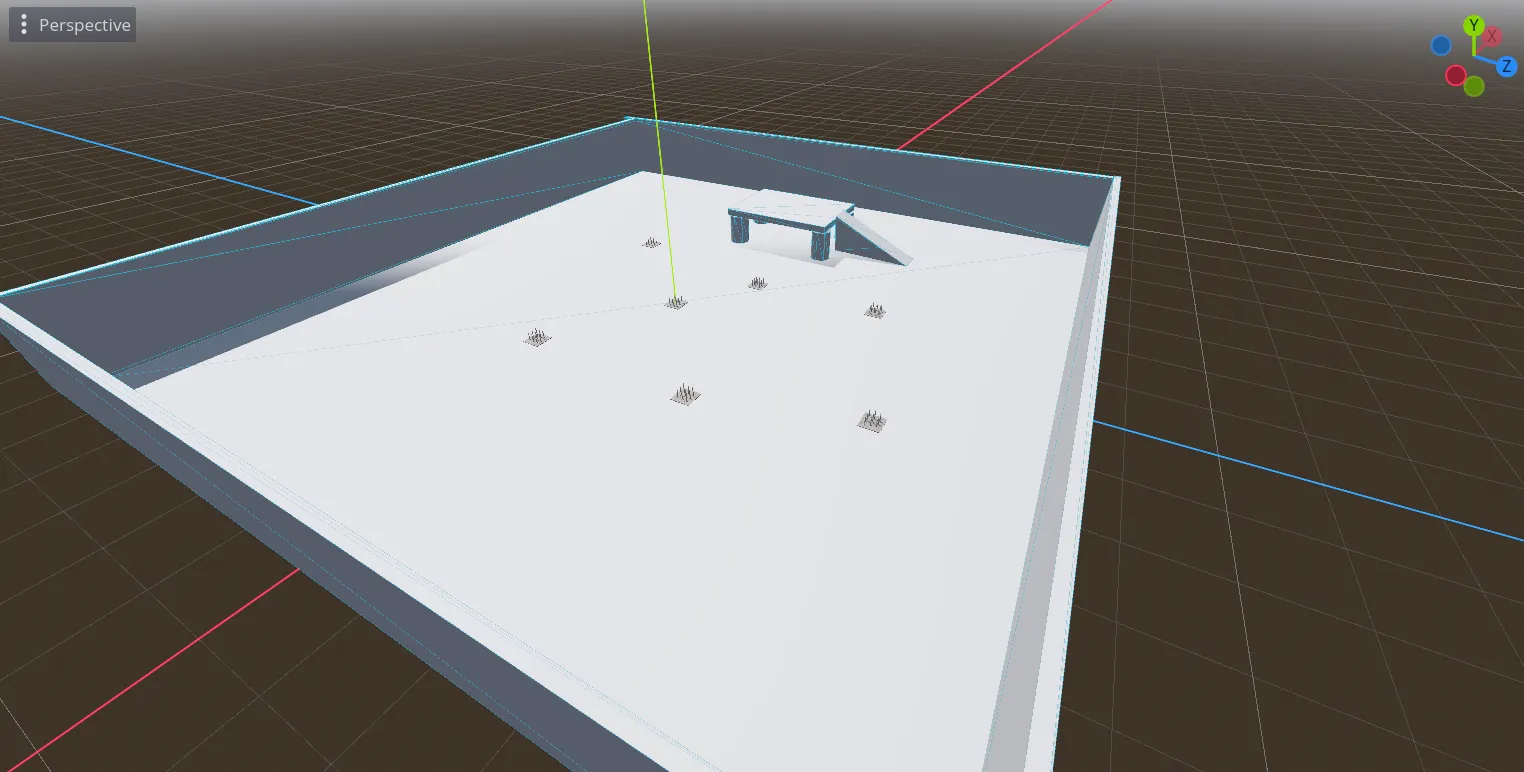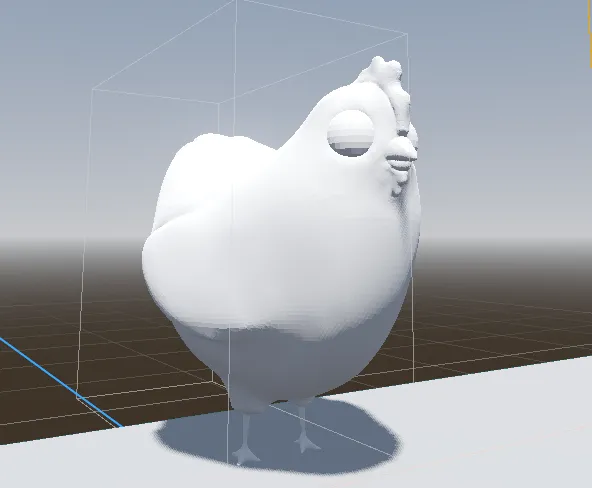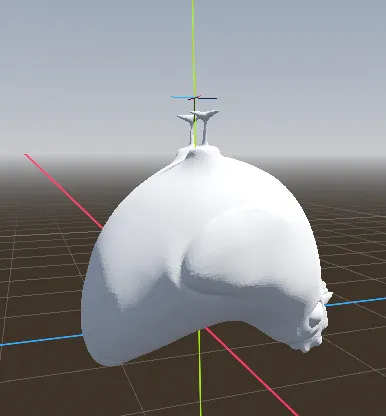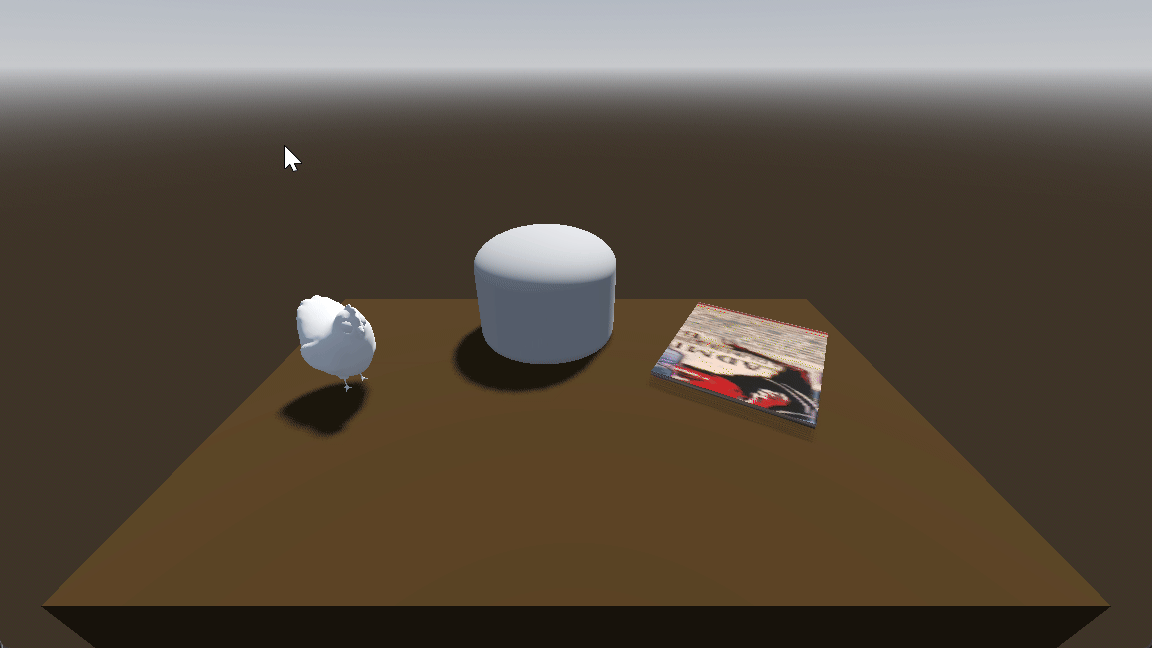Prototype Chicken Fighter
Introduction
Section titled “Introduction”Studio Fishbones presents: Prototype Chicken Fighter, a low-poly 3D arena fighting game developed as part of a minor at The Hague University of Applied Sciences in Zoetermeer.
In this prototype, we are focusing on building the core battle system for the game, where your chicken will fight it out with 3D combat. The game is being developed in Godot Engine 4.3 with a low-poly aesthetic, aiming for a fun and chaotic brawler experience.
This prototype serves as the foundation for future gameplay features, where we plan to add more depth to the chicken fighters and their abilities.
Setup Guide
Section titled “Setup Guide”To get Prototype Chicken Fighter up and running locally, follow these steps:
1. Clone the Repository
Section titled “1. Clone the Repository”First, clone the repository to your local machine:
git clone https://github.com/Fishbones-Studio/ChickenFighterPrototype.git2. Open the project in godot
Section titled “2. Open the project in godot”After cloning the repo, open the project in Godot Engine:
Launch Godot and open the chickenfighterprototype folder in the project folder.
3. Run the Game
Section titled “3. Run the Game”You can now run the prototype from within Godot by clicking the Play button (or pressing F5).
Gameplay Screenshots
Section titled “Gameplay Screenshots”Battle Arena
Section titled “Battle Arena” The low-poly battle arena in action.
The low-poly battle arena in action.
Chicken Fighter
Section titled “Chicken Fighter” Your mighty chicken fighter, ready for battle.
Your mighty chicken fighter, ready for battle.
Main Enemy
Section titled “Main Enemy”The current main enemy is just an upside down chicken, using the same model as the player.
 The current main enemy for our mighty chicken to fight against.
The current main enemy for our mighty chicken to fight against.
Prototype video
Section titled “Prototype video”
Code for Our Game
Section titled “Code for Our Game”1. Player Script (player.gd)
Section titled “1. Player Script (player.gd)”The Player Script controls the player’s movement, jumping, sprinting, and stamina. It utilizes the CharacterBody3D class in Godot for movement and physics.
Key Functionalities:
Section titled “Key Functionalities:”1. Movement
Section titled “1. Movement”The player’s movement is handled using the transform.basis of the character, which corresponds to the directions (forward, backward, left, right) relative to the character’s rotation. The player’s direction is updated based on input, and movement is applied accordingly.
func move_forward(): direction -= transform.basis.zthe node goes forward
func move_backward(): direction += transform.basis.zthe node goes backwards
func move_left(): direction -= transform.basis.xthe node goes left
func move_right(): direction += transform.basis.xthe node goes right
2. Stamina
Section titled “2. Stamina”The stamina system is designed to add a layer of strategy to gameplay by limiting the player’s ability to sprint and forcing them to manage their stamina during fights.
func check_if_sprint(delta: float): if Input.is_action_pressed("sprint") and STAMINA > 0: is_sprinting = true SPEED = SPRINT_SPEED sprint_timer += delta if sprint_timer >= 1.0: STAMINA -= STAMINA_DRAIN_RATE STAMINA = max(STAMINA, 0) sprint_timer = 0.0This code handles stamina draining when the player is sprinting. If the sprint button is pressed and there is stamina, the player will sprint, and stamina will decrease over time.
else: SPEED = NORMAL_SPEED is_sprinting = false sprint_timer += delta if sprint_timer >= 1.0: STAMINA += STAMINA_RECOVER_RATE STAMINA = min(STAMINA, MAX_STAMINA) sprint_timer = 0.0When the player is not sprinting, stamina recovers. The code increases stamina over time until it reaches the maximum value, ensuring the player can’t exceed their stamina limit.
3. Jump
Section titled “3. Jump”func handle_jump(): if Input.is_action_just_pressed("jump") and is_on_floor(): velocity.y = JUMP_VELOCITYwith this code the node will jump
2. Enemy Script (enemy.gd)
Section titled “2. Enemy Script (enemy.gd)”The Enemy Script controls the behavior of the enemy, including its movement toward the player. It extends the CharacterBody3D class in Godot, similar to the player script, to handle movement and physics interactions.
Key Functionalities:
Section titled “Key Functionalities:”Movement Toward the Player: The enemy constantly tracks the player’s position and moves toward it, using a simple path-following system.
@onready var player = get_node("../Player")tells what node he needs to target
func _physics_process(delta): if player: move_towards_player(delta)This function checks if the player exists and, if so, calls the movement function to move the enemy toward the player.
func move_towards_player(delta): var direction = (player.global_position - global_position).normalized() velocity = direction * SPEED move_and_slide()In this part, the enemy calculates the direction toward the player’s position and updates its velocity to move toward the player. The movement is smoothed out using move_and_slide() to ensure fluid motion.
This basic enemy AI allows the enemy to chase the player in the game world, creating a simple but functional threat for the player to deal with.
3. Hazard
Section titled “3. Hazard”
For this prototype, we added a single hazard type: Spikes.
Spikes
Section titled “Spikes”Spikes are a static hazard placed in the arena. When the player comes into contact with the spikes, they take damage. This is done through a signal in enemy.gd, to ensure separation of concern:
extends StaticBody3D
@export var DAMAGE: int = 5
func _on_spike_area_body_entered(body: Node3D) -> void: if body is ChickenPlayer: SignalManager.hurt_player.emit(DAMAGE)Which is then connected to the health_component.gd and reflected in the ui.
extends Node3D
@export var MAX_HEALTH := 100.0var health : float
func _ready(): health = MAX_HEALTH SignalManager.hurt_player.connect(_on_damage_taken)
func _process(_delta): if health <= 0: die()
func die(): get_parent().queue_free()
func _on_damage_taken(damage: int): health -= damageBehavior:
Section titled “Behavior:”- Damage on Contact: If the player’s character collides with the spikes, the player’s health is reduced.
- Static Placement: The spikes are placed in fixed locations within the arena and do not move.
- Visual Feedback: The player receives feedback, a knock back effect.
Future Features to Be Added
Section titled “Future Features to Be Added”1. Combat System for the Player and Enemy
Section titled “1. Combat System for the Player and Enemy”Currently, the player and enemy only move around the arena. In the future, we plan to implement a combat system where both the player and the enemy can perform attacks, block, and interact with each other in combat.
Key Features to Add:
Section titled “Key Features to Add:”- Player Attacks: The player will be able to perform basic attacks, such as punches or kicks, that deal damage to enemies.
- Enemy Attacks: The enemy will also have attacks that can damage the player, requiring the player to dodge or block.
- Health System: Both the player and enemy will have health bars that decrease when they are hit by attacks.
- Hit Detection: The combat system will involve collision detection to ensure that attacks land and cause damage properly.
This feature will create a more dynamic gameplay experience where players can engage in intense battles with enemies.
2. Lock-On System
Section titled “2. Lock-On System”To enhance combat and provide better targeting during battles, we plan to implement a lock-on system. This will allow the player to focus on a specific enemy, keeping them in view even as they move around the arena.
Key Features to Add:
Section titled “Key Features to Add:”- Lock-On Mechanic: When activated, the camera will focus on the locked-on enemy, and the player’s controls will adjust to make it easier to track and fight that enemy.
- Camera Adjustments: The camera will adjust to keep the locked-on enemy in the center of the screen.
- Switching Targets: Players will be able to switch between enemies if multiple foes are present in the arena.
- Lock-On Indicator: A UI element will show the player which enemy is currently locked on, giving them clear feedback.
The lock-on system will improve combat precision and make it easier for the player to focus on specific enemies in chaotic battles.
3. Random Objects Around the Arena
Section titled “3. Random Objects Around the Arena”To make the arena more dynamic and challenging, we plan to introduce multiple random objects that can appear during combat. These objects will hinder the player’s movement or provide new strategic opportunities for both the player and enemies.
Key Features to Add:
Section titled “Key Features to Add:”- Obstacles: Random objects, such as rocks, boxes, or barrels, will spawn in the arena. These can block the player’s movement.
- Hazards: Certain objects could deal damage to the player or enemy if they are hit or interacted with (e.g., spikes or a bear trap).
- Interactive Objects: Some objects may be moved or interacted with by the player, such as pushing a crate to block an enemy’s path.
- Dynamic Arena: The placement of these objects will be random, ensuring that each battle in the arena feels unique.
These objects will add variety to each match, creating opportunities for environmental tactics and making each battle unpredictable.
These features will enhance the game’s complexity and provide a more engaging experience for the player as they face off against enemies in ever-changing environments.
Conclusion
Section titled “Conclusion”This is just the beginning of our Prototype Chicken Fighter. Our focus was on getting the basic combat, movement, and enemy behavior working. There’s still a lot we would like to add, like upgrades/mutations, an economy, and an egg-hatching system where you can get different kinds of chickens. We also would like to add a fun, interactive UI where the player can manage their fleet of mighty chickens. This prototype gave us a good start, and we are excited to keep working on it and make the game even better.